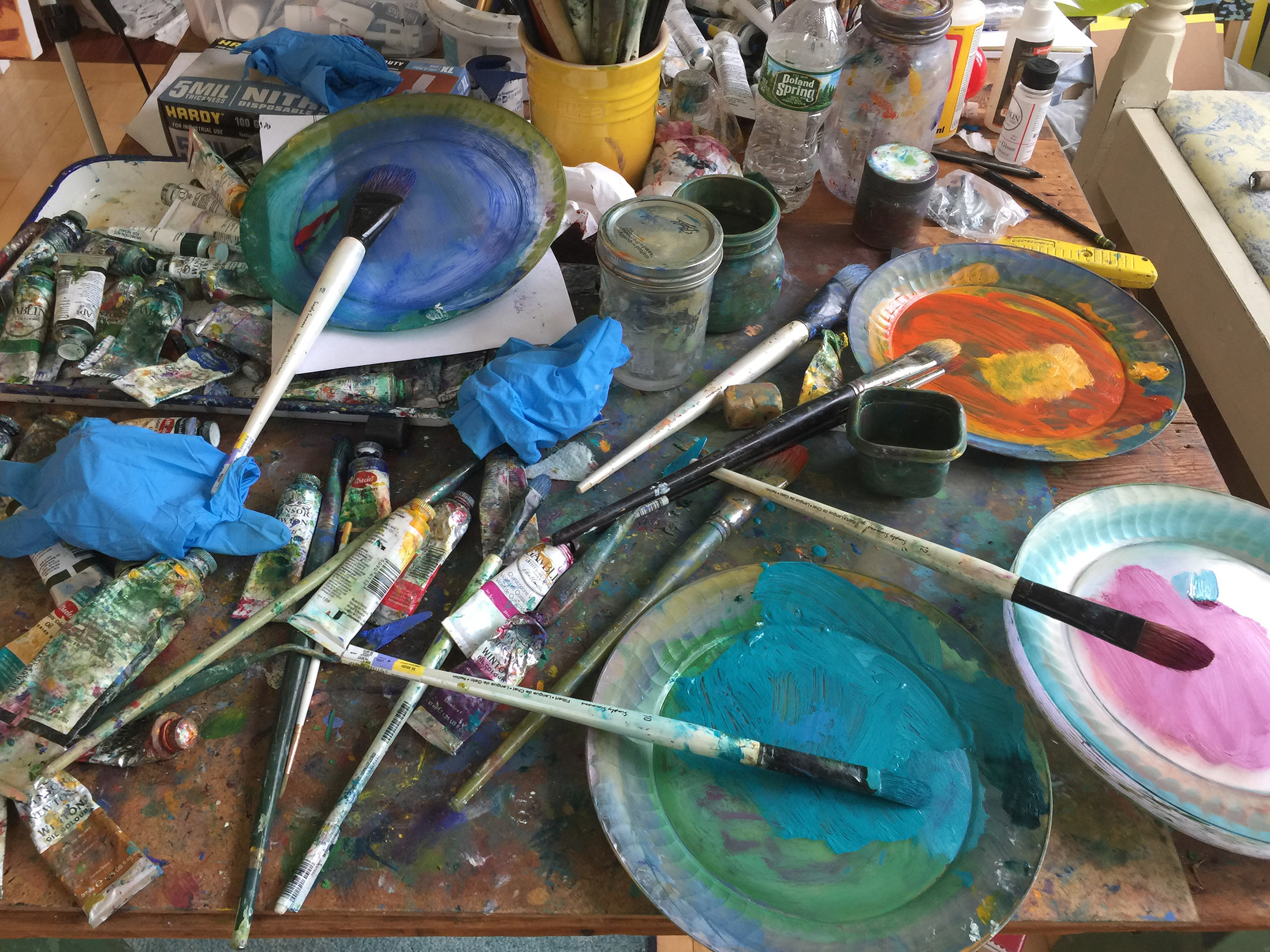There is something about old structures that have withstood time and weather, that have remained intact through good times and bad, that transcends there being man made things. I’ve painted barn pairings before, and in this piece, “Alongside” (36 x 36, based on the old Upham Farm barns down the road), that same sense of allegiance to sticking together exists.
Years ago, when living on Martha’s Vineyard, days began, or ended, with walks through the many open land trails the Island offers. This piece, “Island Meadow Afternoon” (40 x 30, oil on canvas) is of a clearing in an up-Island tract of privately owned land in Chilmark, a portion of which has been deeded to one of the Island’s land conservation organizations.
Recently completed 36 x 36, “Rising Sun”
I never mind getting lost. When driving through the rural back roads of New England (or anywhere), GPS shut off, it’s inevitable I’ll end up going the wrong way to wherever I’m going. On a recent trip through rural Central Massachusetts, I found myself lost on an old road, on the outskirts of the town I was headed to, that wound through the woods and eventually led to a clearing at the base of a hill. I came across this scene midway up the ascent.
“The Ascent” 48″ x 48″
While recently on a drive through Harvard, MA–a beautiful small rural town I’d never been to–I came across this old farm with a main barn and an adjacent long barn that disappeared behind a huge expanse of hedge. Raised on slight knoll, the main barn seemed somewhat smaller than it should, due, perhaps, to the bigness of the shrubbery in the foreground. What stuck with me about the scene was the hint of green in the sky that late afternoon. It was that green I wanted as the subject of the piece. Ultimately, though, I don’t think it is, though it did become the title.
In this piece, Summer Sun, the intention was to keep the piece simple, sparse of detail, and focused on the light, shadows, and the object casting the shadows. As many things in the scene were edited out, it was the remaining elements that proved to be a bit more complex to render than I had anticipated. Shadows, the texture of leaves, the balance of warm and cool colors, all offered challenges, requiring continued editing to keep the intended simplicity.
While painting the piece, I felt the need to Google around a bit to see what others had to say about the process of achieving simplicity in something…and if they, too, found that process to be complex. Apple’s Steve Jobs summed it up perfectly: ” Simple can be harder than complex: You have to work hard to get your thinking clean to make it simple.”
A friend recently commented on a social media post, showing work in progress and a corner of the mixing table I use. The friend requested a close up of this table, to see the “fun” I was having. Painting is fun. If it wasn’t, few would endure the hidden difficulties and abundant failures encountered throughout.
I’m always impressed by the neat, orderly, way in which many artists set up their stations, organizing their pallets, and keeping things tidy…contrasted greatly by my process, void of any sense of order. Instead, I prefer this setup…I know exactly where everything is…

Cape Cod’s landscape of water, sand, meadows, flatlands and hills provides uncountable views of incredible beauty. This sand bar has been the inspiration for many artists, most of whom claim the Cape Cod light is one of a kind. For me, the light isn’t different than it is elsewhere, but what it shines on is. The Cape is all about simplicity and sparsity. The old architecture of the Cape was built when there was nothing else around, and was constructed to fit into the landscape, and to survive the often battering weather the Cape can deliver.
In “Bay View” 40 x 40, the simplicity of the landscape, and the old architecture built on it many years ago, combine in a way that complement each other, and the light that illuminates it, becomes the subject.
Completed: “Upper Valley” 48 x 36. Sometimes it can take a couple years to truly complete a piece…